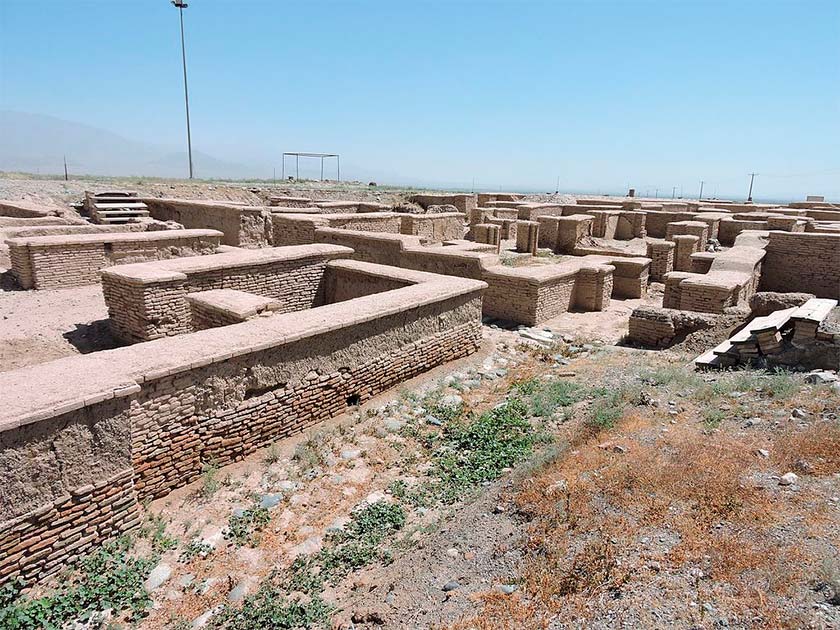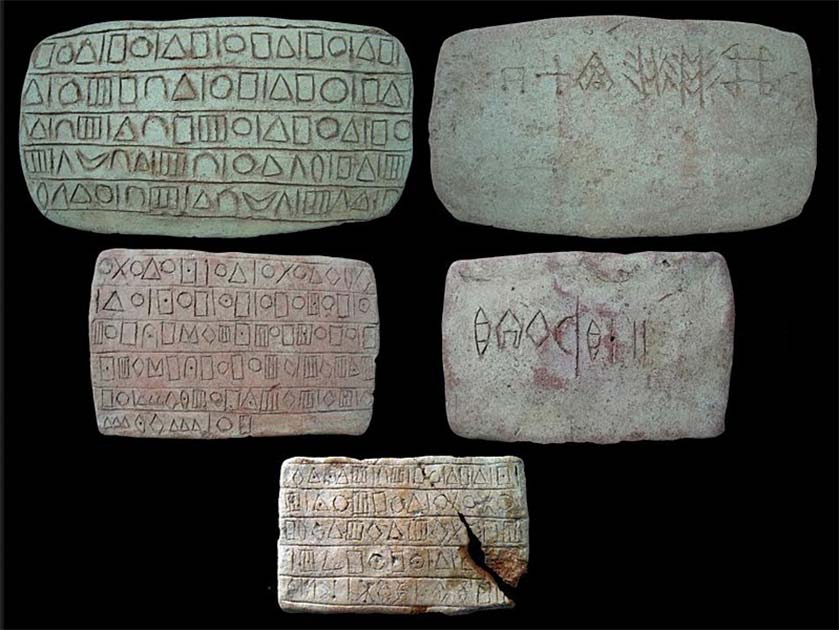Archaeology sometimes suffers from a malaise in public perception. Some think that everything that can be found, has been found.
Sure, there are lost cities hidden in the jungles and doubtless tombs filled with treasure ready for Harrison Ford to break into, but on a macro scale, most will consider our history largely mapped out, in the same way as our geography, or our genetics. We know who came before, the narrative goes.
However, this is not the case. Certainly there are a few civilizations who we understand in great detail, either because they built in stone (like the Romans), built in deserts (like the coastal Inca) or both (like the Egyptians), but much of the world that came before is lost, and entirely new civilizations are still being discovered.
So it is with the Jiroft, one of the oldest cultures in the world and a civilization we knew nothing about until 20 years ago.
The History of the Jiroft
Jiroft today is a city in Iran and is the capital of the Jiroft County in the Kerman Province, with a population of around 95,000. Jiroft is located around 230 kilometers (140 miles) south of Kerman and around 1,375 kilometers (850 miles) south of the capital Tehran.
Also known as Sabzevaran, throughout history, it was known for being fertile and this earned it another nickname: Hend-e-Koochak (the little India). But the civilization that once thrived in this area was one of the oldest human civilizations in the world and the manuscripts that have been found here, have been dated before the cuneiform scripts discovered in Mesopotamia.

Jiroft is an area made up mostly of a vast plain bordered by the Halil River and the Jebal Barez mountains. It is around 650 meters (2,000 feet) above sea level and can have some of the hottest weather in Iran during the summer with fairly moderate weather in the winter.
The history of Jiroft dates to around 5,000 years ago, with the Bronze Age civilization inhabiting it uncovered after a flash flood in the region in 2001. There have been findings in this area especially around the Konar Sandal Mounds with archaeologists coming across stone tablets and clay stones with basic characters on them.
- (In Pics) Ten Great Lost Civilizations of Peru that aren’t the Inca
- Kish: Was This Early Sumerian City Its Own Distinct Civilization?
It has been suggested that these findings provide some of the earliest evidence for what is known as the Elamite writing system, as well as what may be the earliest evidence for a Ziggurat. The Ziggurat is a religious structure found mostly in Mesopotamia that is built in a pyramid shape: the Jiroft were pyramid builders, like everyone else.
Ancient Persia has always been considered a foundation for many of the complex civilizations in the middle east. Archaeological research has been conducted in the Halil Rud Valley just South of Kerman with the view of protecting the necropolises from the prehistoric era from the looters of local inhabitants.
Local people were looting the tombs in this area so that they could sell them to the Western world. Unfortunately, when these objects are taken out of their historical contexts without the proper techniques of recording and excavation much of the information and value is lost. Despite an official ban on plundering, much of it continued. Iranian archaeologists have made great steps towards understanding the region and studying the art and architecture that dates to around 3100 BC.
The architectural creations and sculptures found in the area between the Strait of Hormuz and Kerman have been found to have come from a similar period as the Sumerian art found at the city of Ur and in some cases rivals its productions. As far as historians and archaeologists know there was at least one proto-Elamitic civilization found in this area of Southeast Persia. They had a primitive form of writing which has been found in Kashan.
What has been Found?
Youssof Majidzadeh is the Iranian archaeologist in charge of the recent excavations of Halil Rud with a particular interest in the Jiroft region. The archaeologists have found and built a collection of decorated intricate stone objects.
There is a special quality in the types of local materials that come from chlorite. It makes the material suitable for vases, bottles, statues, weights, and animal figures. As well as this, there have been findings that indicate there were unfired brick ramparts measuring 11 meters (36 feet) thick and unearthed terraces that are at the upper part of the mounds.

These platforms varied from 11 meters up to 15 meters (36 to 50 feet) above the ground, creating a surface area of around 4 hectares (10 acres). It has been suspected that people lived here for centuries.
Unfortunately, the unfired bricks and clay earth were brittle and because of the changes in climate and the invasion of neighboring tribes, these structures had to be built over and over again. This led to mounds being created in the area. Archaeologists have found around 12-18 superposed levels that were dug into these mounds.
- The Oxus Civilization and the Lost World of Central Asia
- (In Pics) Seven Civilizations lost in the Bronze Age Collapse
The most interesting aspect of the culture from this area is that the writing that was found here dates to the 4th millennium BC. It was discovered on tablets and has since been studied meticulously so that they could be deciphered.
In truth, what we now know to be Jirfoft artifacts had been turning up for decades before they were correctly identified. The first tablets were discovered in 1901 in Susa and were made up of around 200 pieces. In 1923, a further 490 pieces were found.
By 1949, archaeologists had discovered over 5,000 different signs. Similar tablets have been found at Tepe Sialk and have allowed scholars to consider the Iranian plateau as the center of some of the earliest writing.

One of the most interesting aspects of the finds is the decoration that can be seen on them. They are quite unique. They represent everyday life in a vigorous and allusive manner depicting livestock, wild animals, humans, gods, temples, and other great buildings. Additionally, they seem to show a world inhabited by demons and monsters.
Because of their vividness, these etchings and carvings are great insights into the social and political time of when they are from. It should be noted that they also display the artisanal craftsmanship of the age. Chlorite is a dense stone that lends itself to sculptures and reliefs. What can also be seen is a constant push for perfection and honing of skills through the multiple pieces found.
Much of the decoration tends to show rows of dotted lines, crosses, motifs, and spirals as well as undulating lines. Motifs like wool ringlets with curls are suspected to represent rams or goats in a technique that is very similar to those found in Sumerian culture.
Spirals also seem to represent the rivers in the surrounding areas. They are often accompanied by heaps of earth that represent the mountains of the valley. Vegetation is shown with roots sinking into the ground whilst trees tower above the earth before bending down towards it. Technically, these productions are some of the finest of the period and may have been colored and decorated further to add luxury and class to their creations. It shows just how civilized this area was and perhaps helps to contribute to the understanding of the Ancient Middle East.
Top Image: Chlorite carvig from the Jiroft culture, dated to the late 3rd millennium BC Source: Behrouz.rayini / CC BY-SA 4.0.
By Kurt Readman